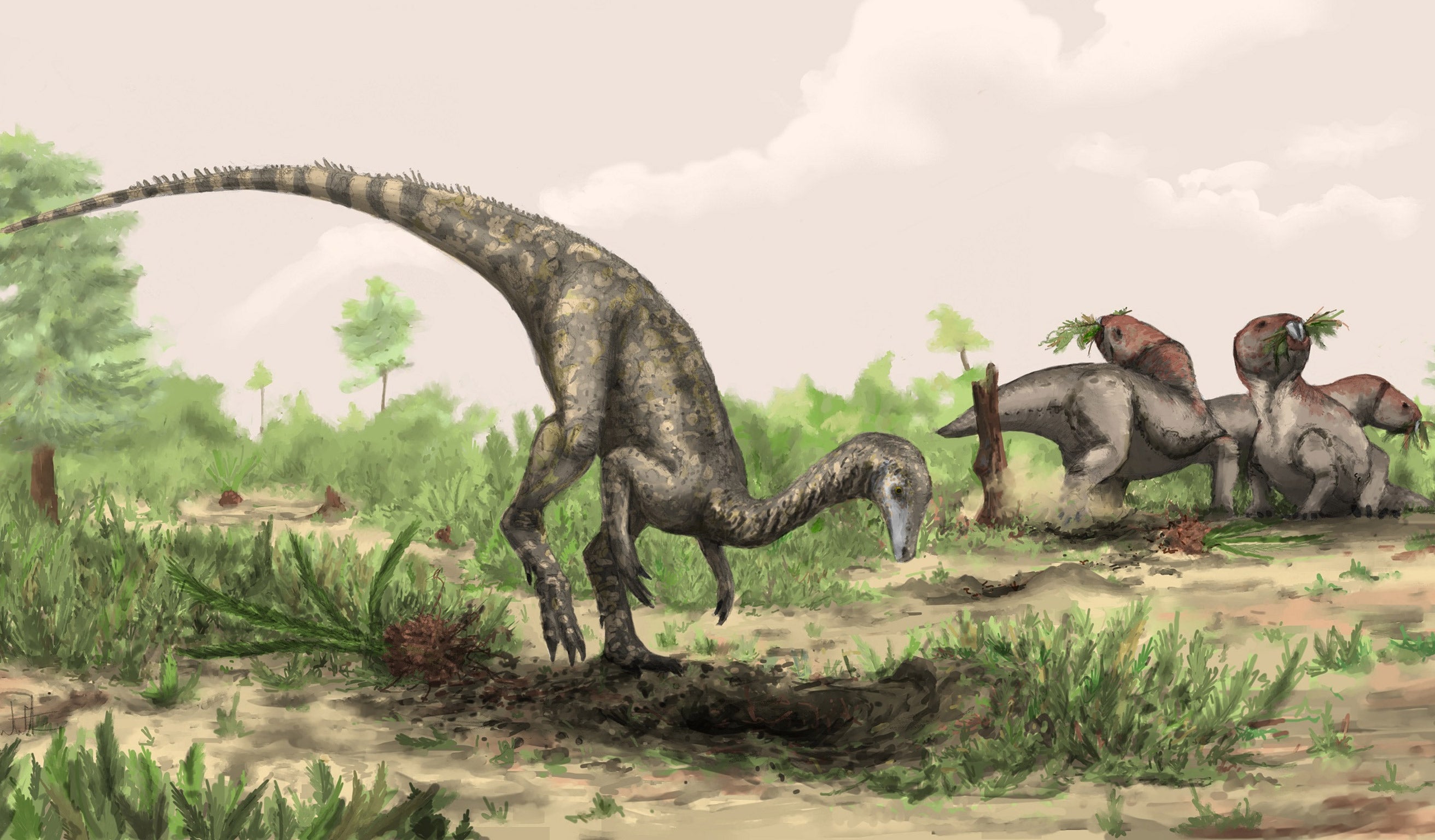World's oldest dinosaur found – in a museum storeroom
Bones locked away for more than half a century overturn previous theories

A set of fossilised bones kept for more than half a century in the dusty storerooms of the Natural History Museum in London belonged to the earliest-known dinosaur to roam the land.
Scientists have confirmed that the fossils, which were first unearthed in the 1930s in Tanzania, are those of a Labrador-sized dinosaur that lived at least 10 to 15 million years earlier than the previous oldest-known dinosaur.
The dinosaur probably stood upright on two legs and was between two and three metres long with a metre-long tail. However, scientists do not know whether it was a carnivore or herbivore because no teeth or jaws were preserved.
They have named the extinct species Nyasasaurus parringtoni after Africa's Lake Nyasa, now called Lake Malawi, and Cambridge University's Rex Parrington, a palaeontologist who discovered the fossils in East Africa.
Parrington handed over the rocks and fossilised bones to his PhD student, Alan Charig, who carried out an initial assessment of the bones in the 1950s and was still working on the project at the Natural History Museum when he died in 1997.
The fossils were then stored away again until they were re-examined by a team from Britain and the US. They found the creature's arm bones bear the key characteristics of dinosaurs and that it must have grown rapidly, another distinguishing feature of dinosaurs. The fossils have been dated to between 247 million and 235 million years ago, a geological period known as the Triassic when Africa was part of a giant supercontinent called Pangaea, which included South America, the Antarctic and Australia.
"If the newly named Nyasasaurus parringtoni is not the earliest dinosaur, then it is the closest living relative found so far," said Sterling Nesbitt of the University of Washington in Seattle, who collaborated on the study published in the journal Biology Letters.
"It establishes that dinosaurs likely evolved earlier than previously expected and refutes the idea that dinosaur diversity burst onto the scene in the Late Triassic [Period], a burst of diversification unseen in any other groups at that time," Dr Nesbitt said.
Paul Barrett, a dinosaur expert at the Natural History Museum, said: "Although we only know Nyasasaurus from fossil fragments, the anatomy of its upper arm bone and hips have features that are unique to dinosaurs, making us confident that we're dealing with an animal very close to dinosaur origin."
Dinosaur fossils are found throughout the world. However, the discovery confirms that dinosaurs probably originated in the southern hemisphere and migrated north, probably with the movement of the continents.
"These new findings place the early evolution of dinosaurs and dinosaur-like reptiles firmly in the southern continents," Dr Barrett said.
Subscribe to Independent Premium to bookmark this article
Want to bookmark your favourite articles and stories to read or reference later? Start your Independent Premium subscription today.

Join our commenting forum
Join thought-provoking conversations, follow other Independent readers and see their replies